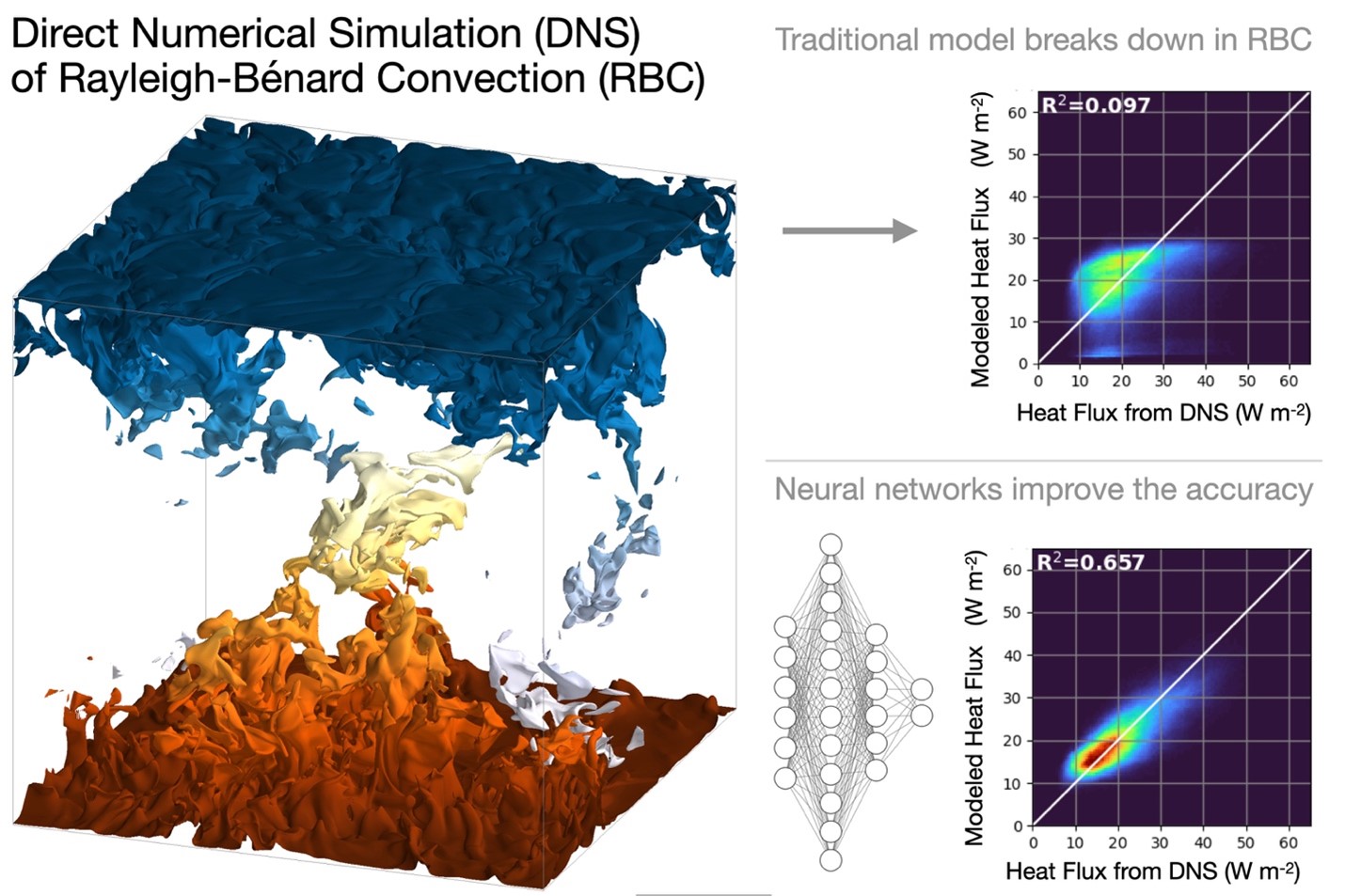Interpretable and physics-aware neural networks improve modeling of turbulence near the surface
Submitter
Ovchinnikov, Mikhail — Pacific Northwest National Laboratory
Wang, Aaron — Pacific Northwest National Laboratory
Area of research
Atmospheric Thermodynamics and Vertical Structures
Journal Reference
Science
Turbulence near the Earth’s surface effectively transports momentum, heat, and moisture into the atmosphere. However, a universal model to accurately represent these turbulent fluxes in various flows does not exist. When the turbulence is driven by a vertical temperature gradient and thermal convection, as in the Rayleigh-Bénard convection, traditional turbulence models fail to capture the surface fluxes accurately. To understand the underlying physics and develop a better model, high-resolution simulation data are used to train neural networks and interpret contributions of various input variables. The trained model highlights important flow quantities that traditional models overlook. Additionally, the physics-aware approach allows the model to perform well even when applied to conditions outside the training range.
Impact
To the best of the authors’ knowledge, this study is the first to develop a near-surface turbulence model for thermal convection using interpretable and physics-aware neural networks. The trained models offer researchers more accurate predictions of momentum and heat flux. Rather than being a mere black box, the interpretable machine learning approach provides insight into the limitations of traditional models. Additionally, the physics-aware approach expands the usability of the trained model beyond the scenarios in which the neural networks were trained, thus aiding the development of numerical simulations and broadening their applications.
Summary
The traditional approach of using the Monin-Obukhov similarity theory to model near-surface processes in large-eddy simulations (LESs) can lead to significant errors in thermal convection. This study proposes an alternative approach based on feedforward neural networks trained on output from direct numerical simulation (DNS), where the resolution is high enough to resolve turbulent motion of all scales. The offline tests compare the momentum and heat fluxes computed from filtered DNS input variables to the “true” filtered DNS fluxes. Additionally, the importance of various input features is investigated using the Shapley additive explanations value. In the online tests, the trained models are implemented into LESs to compare the LES-generated momentum and heat fluxes with those in the DNS.


